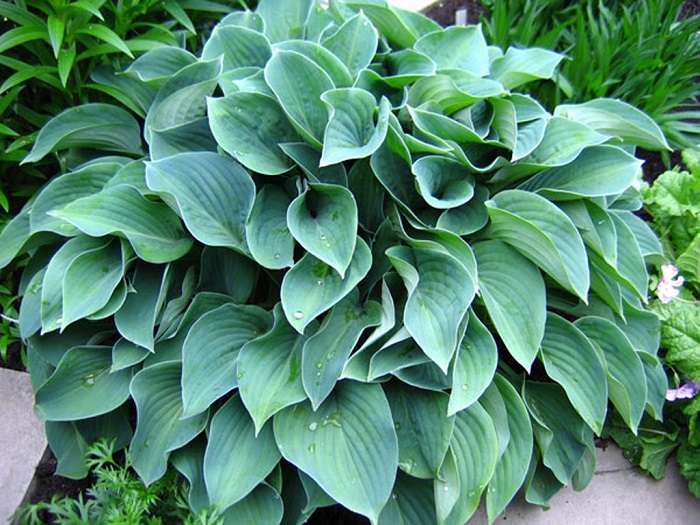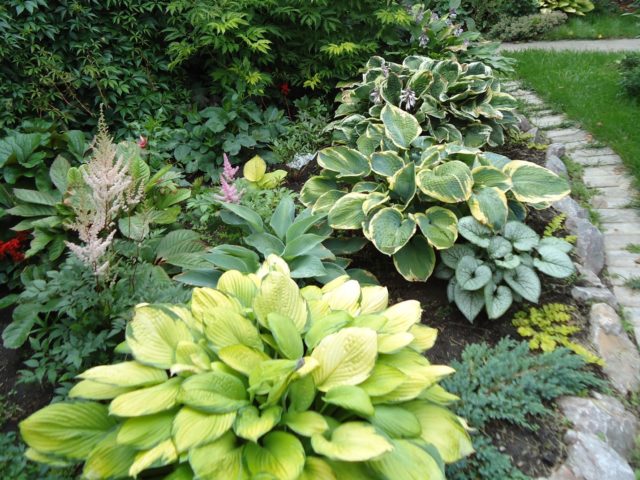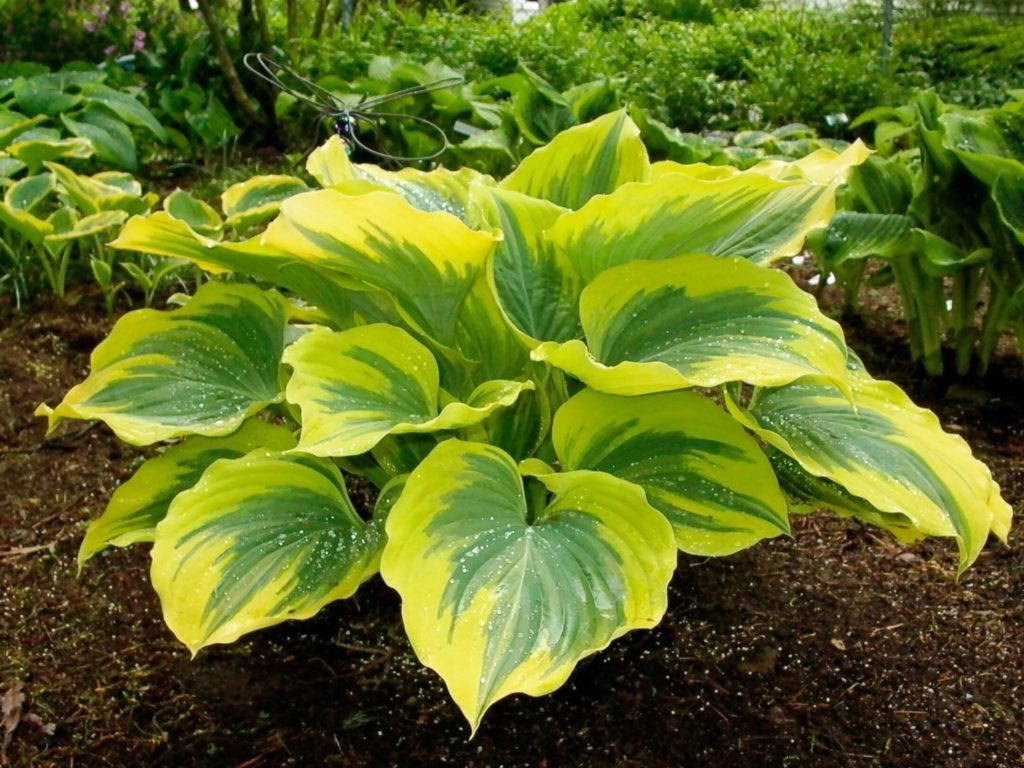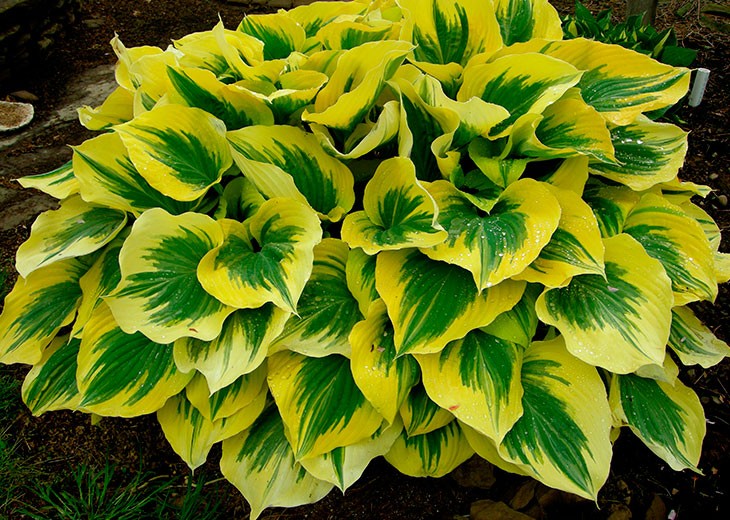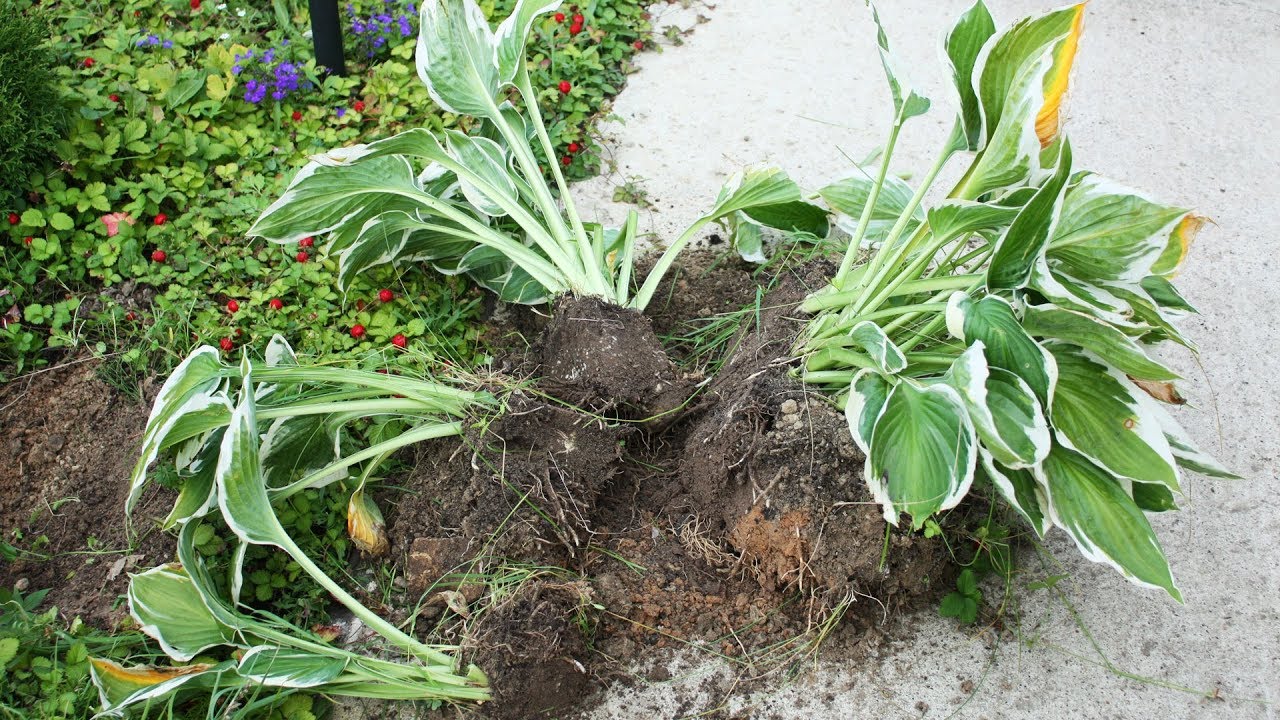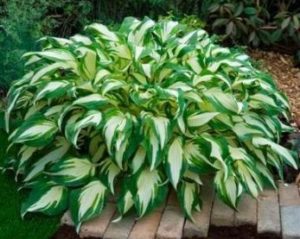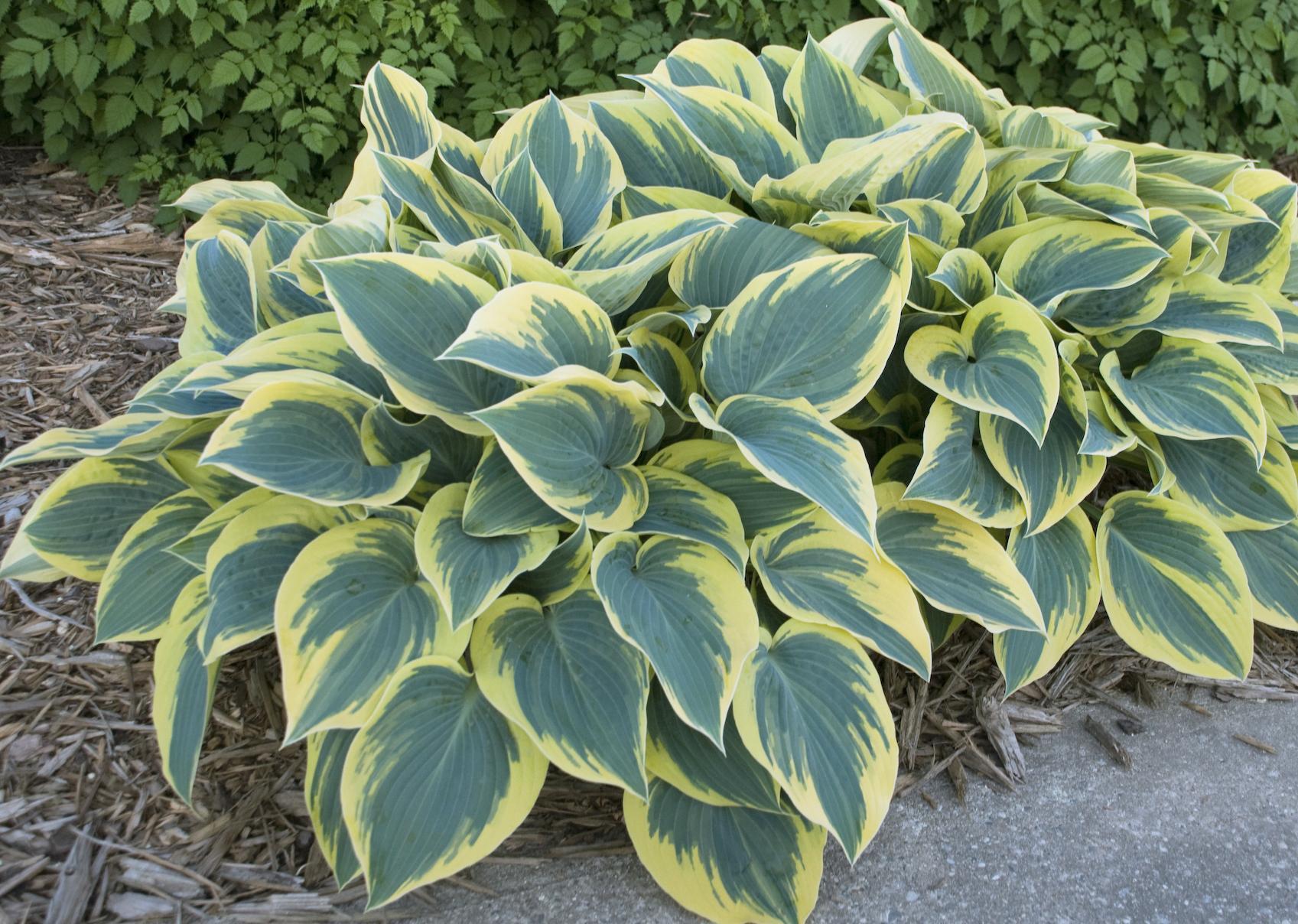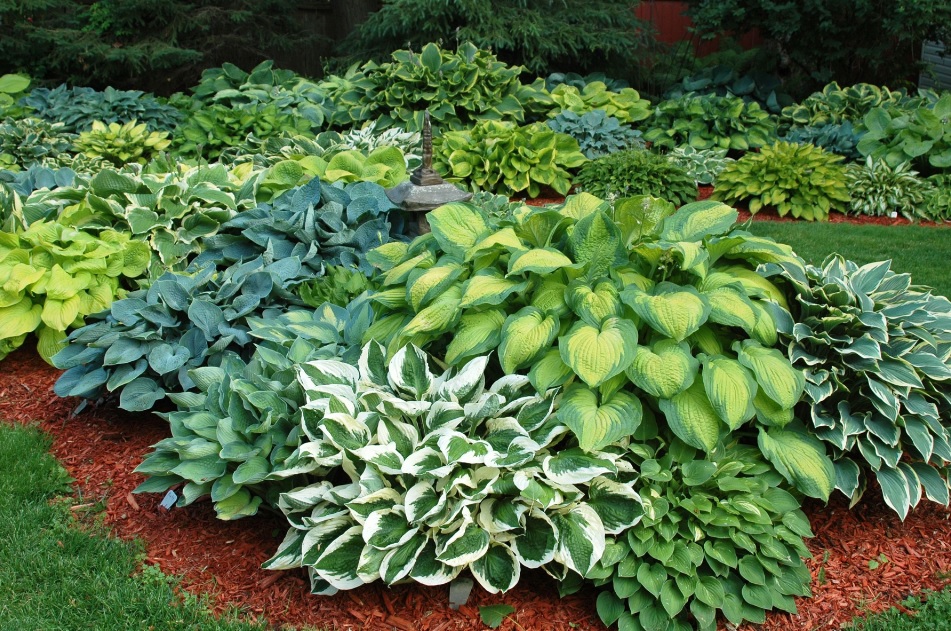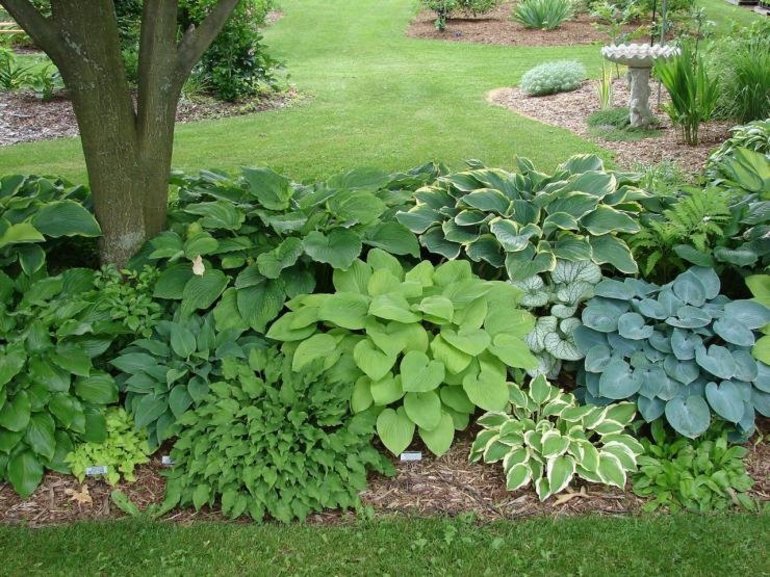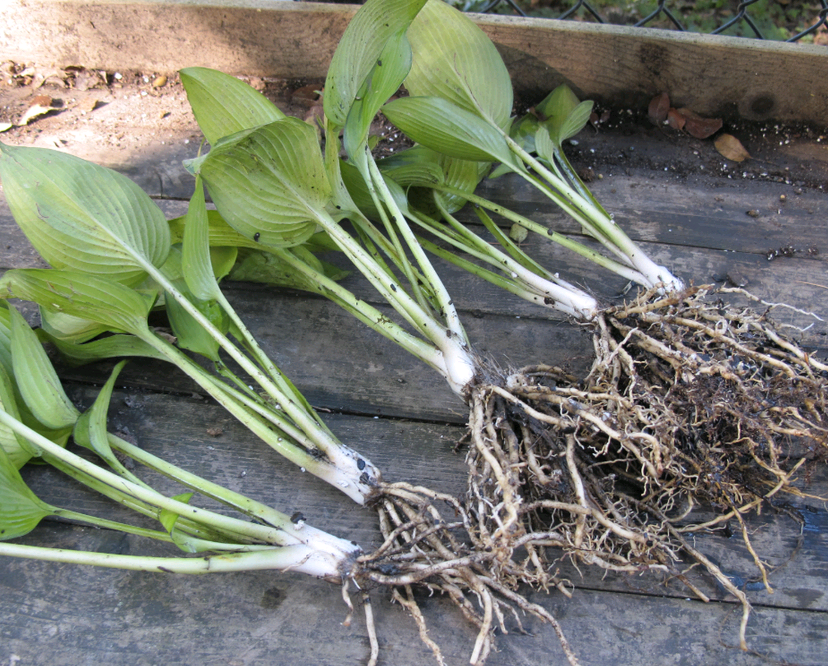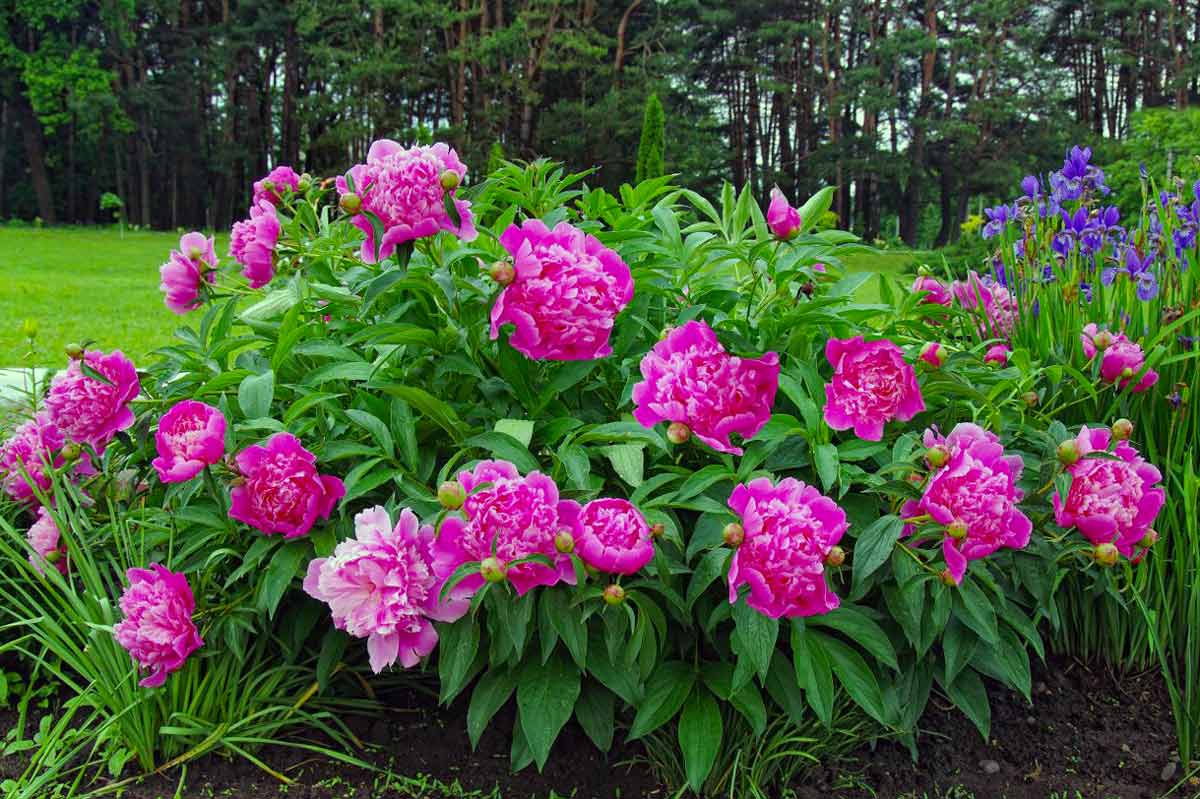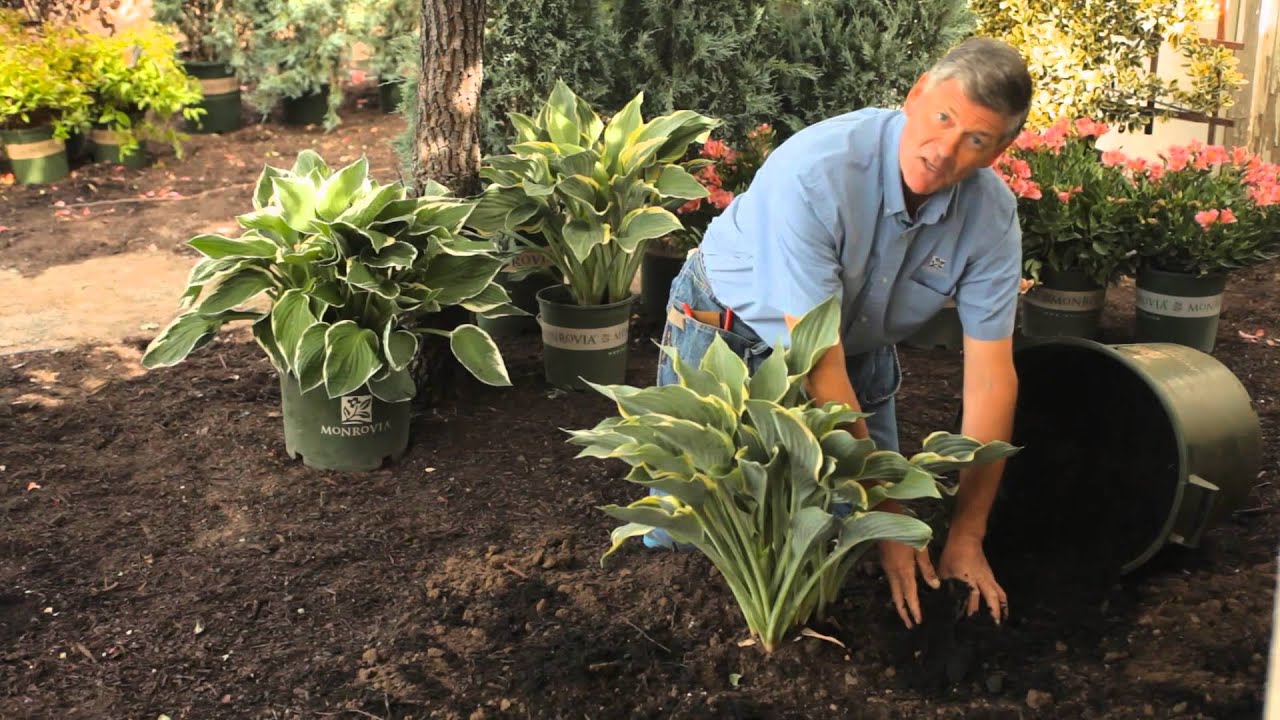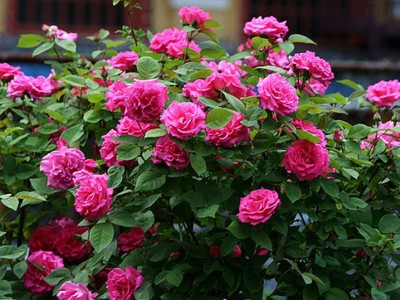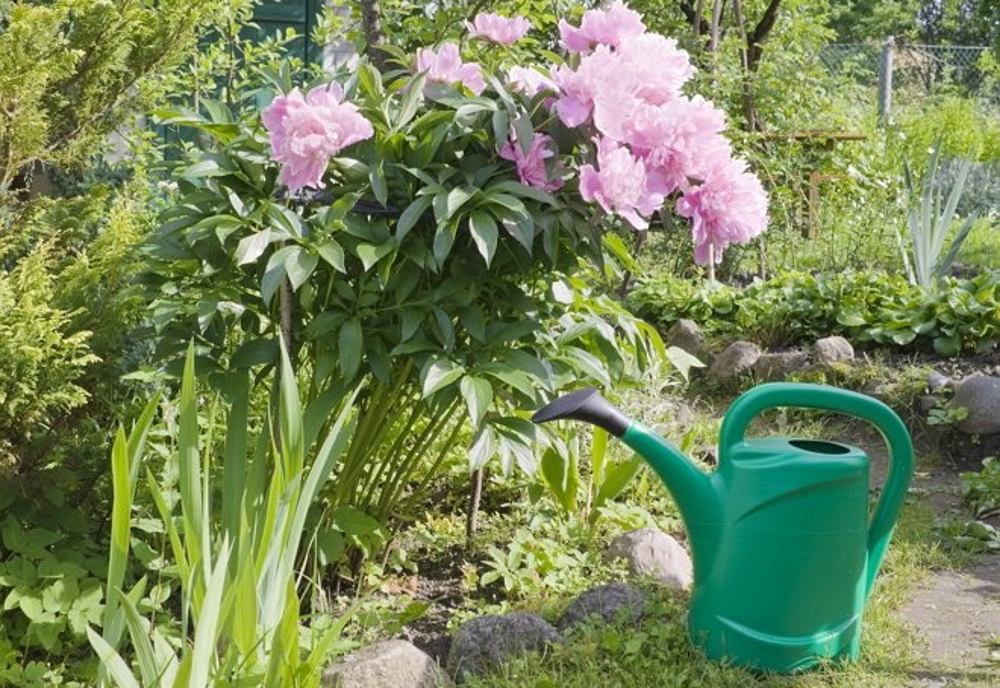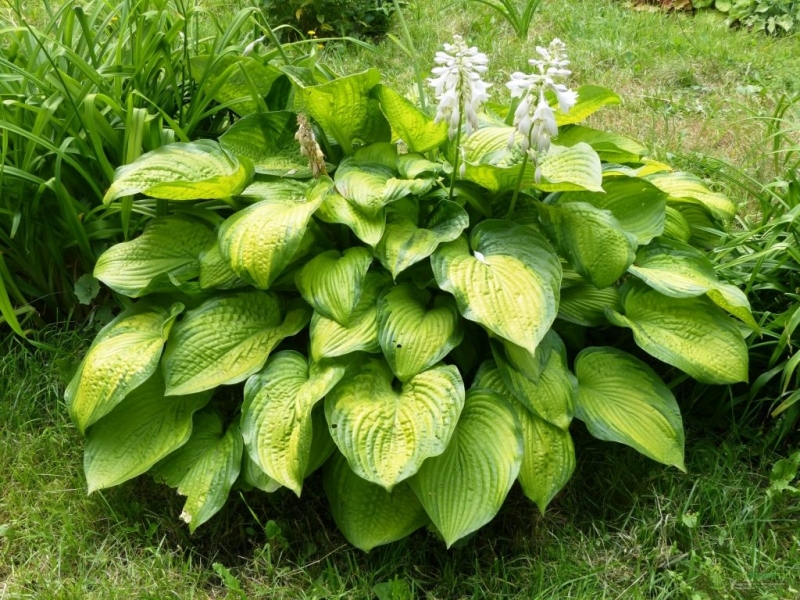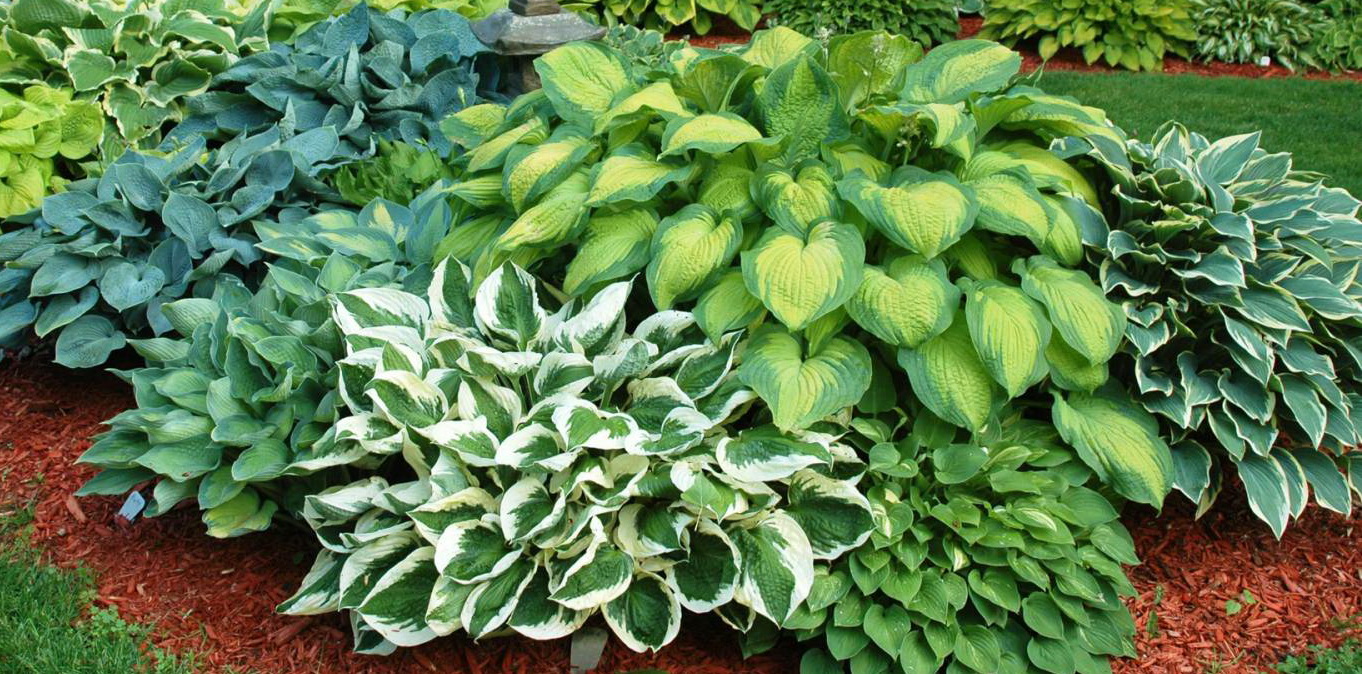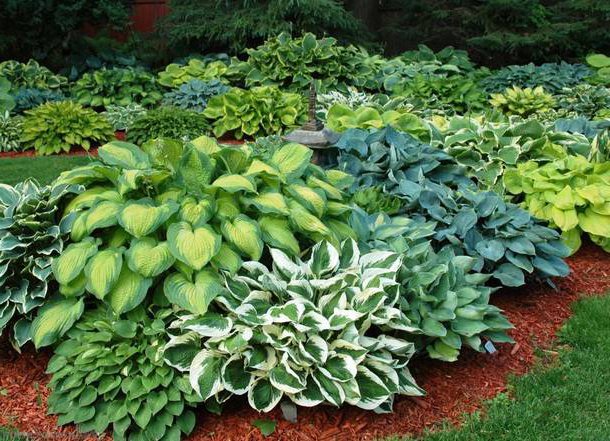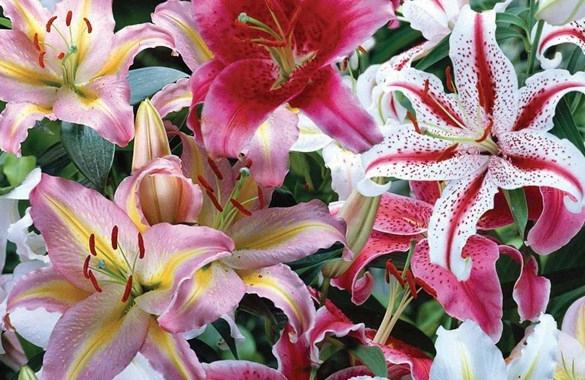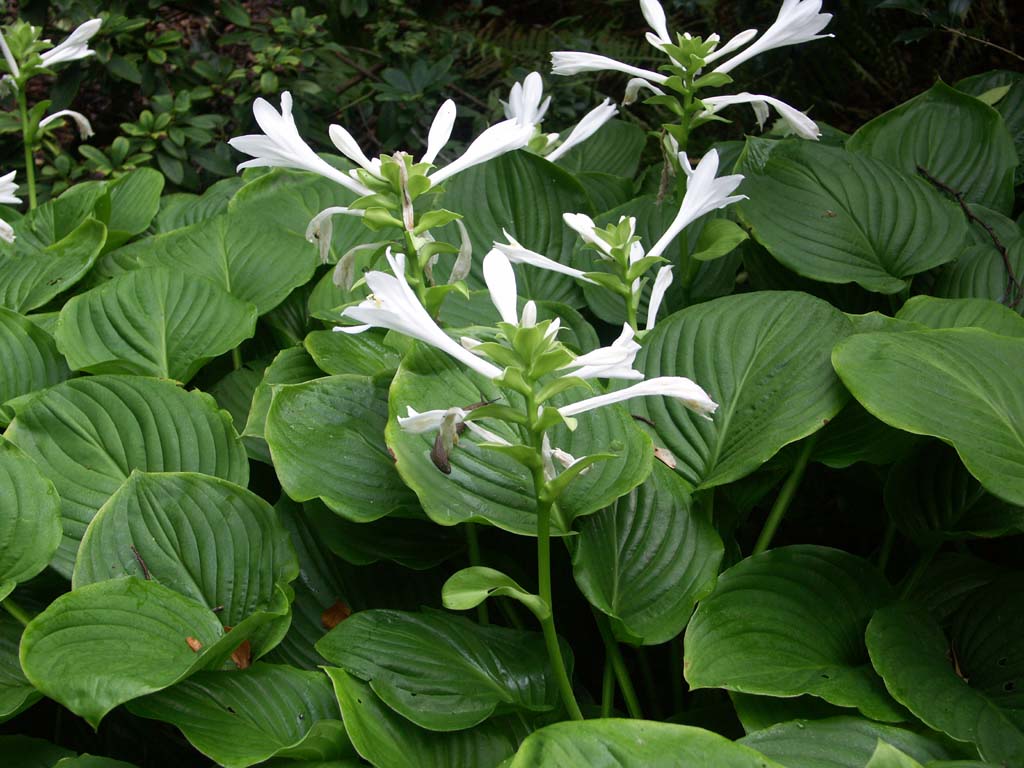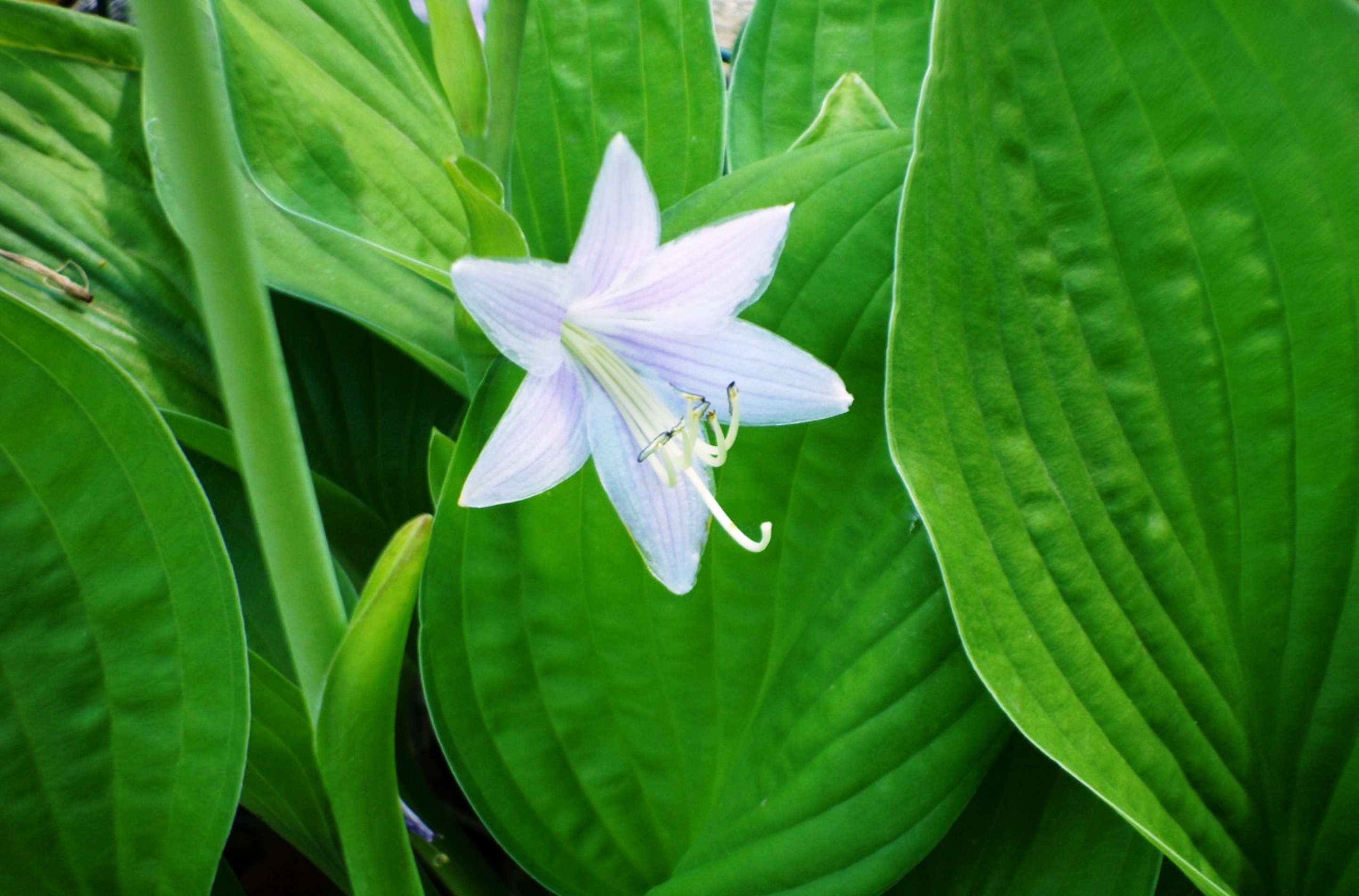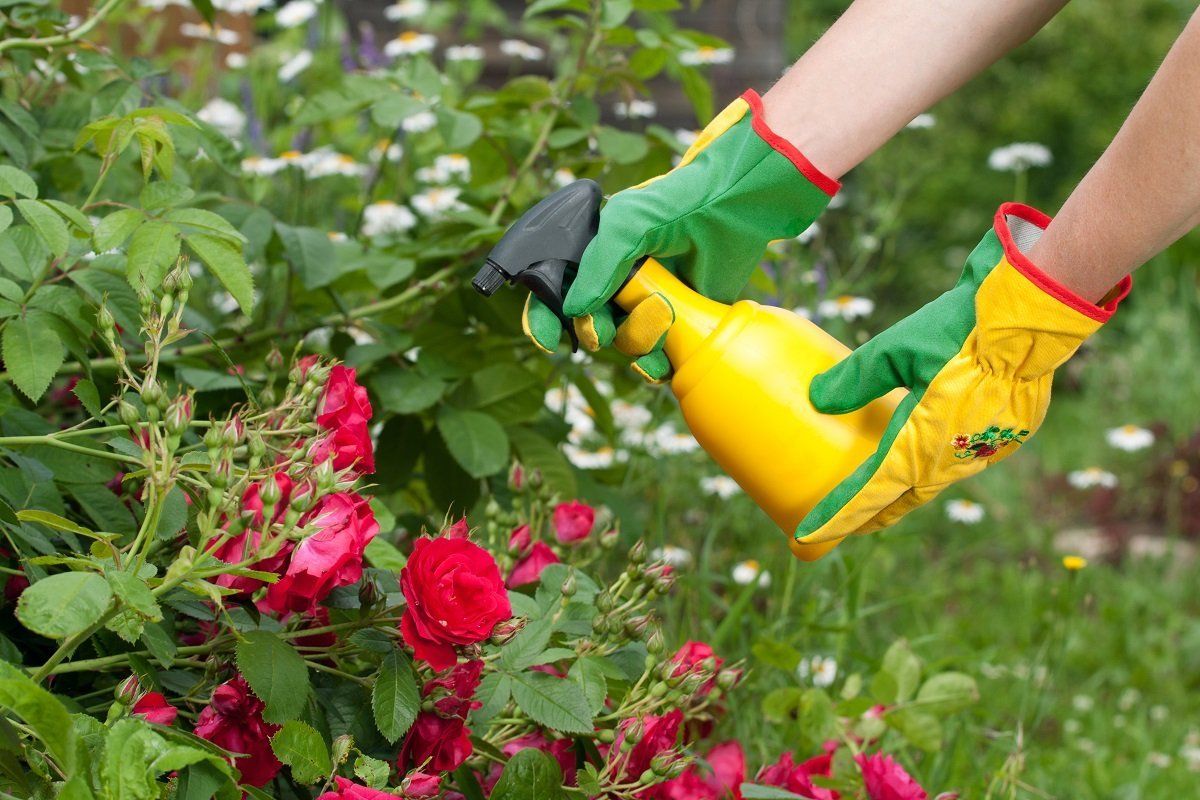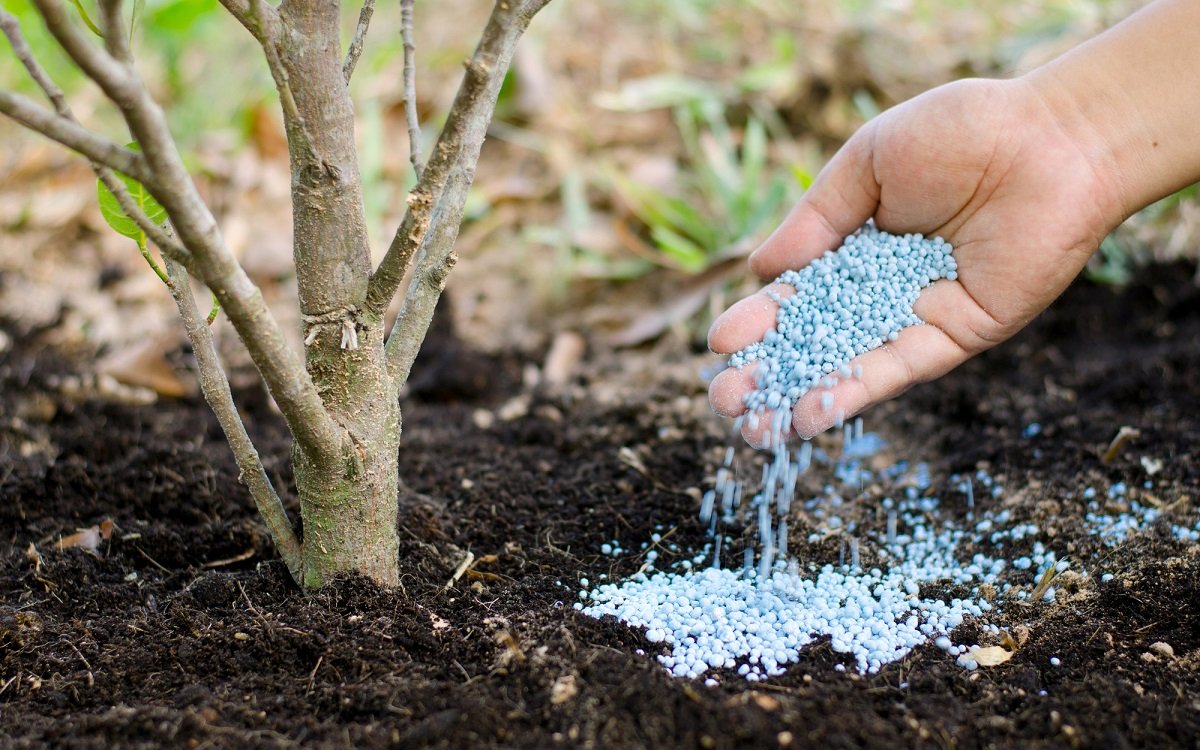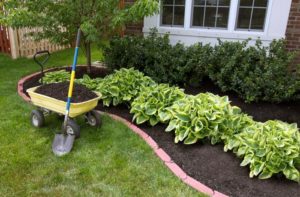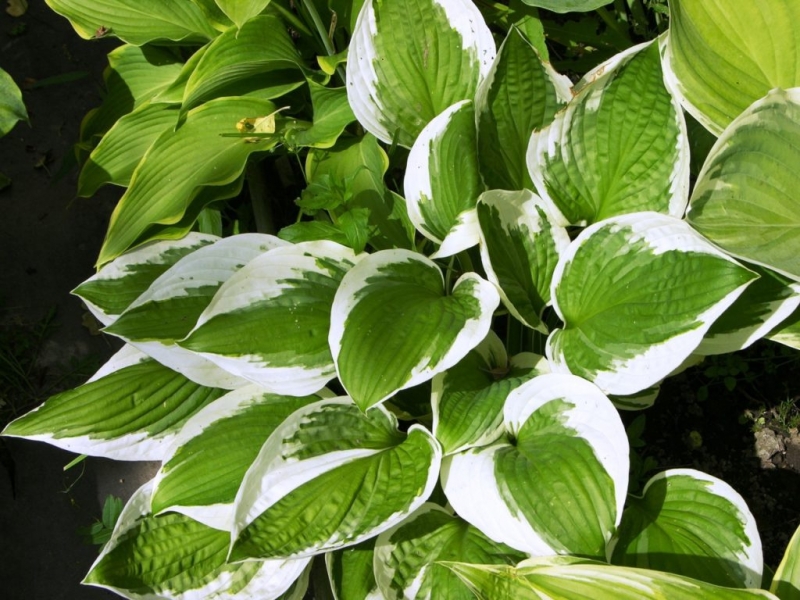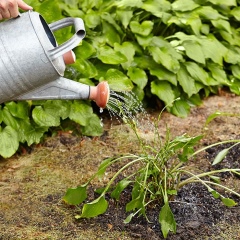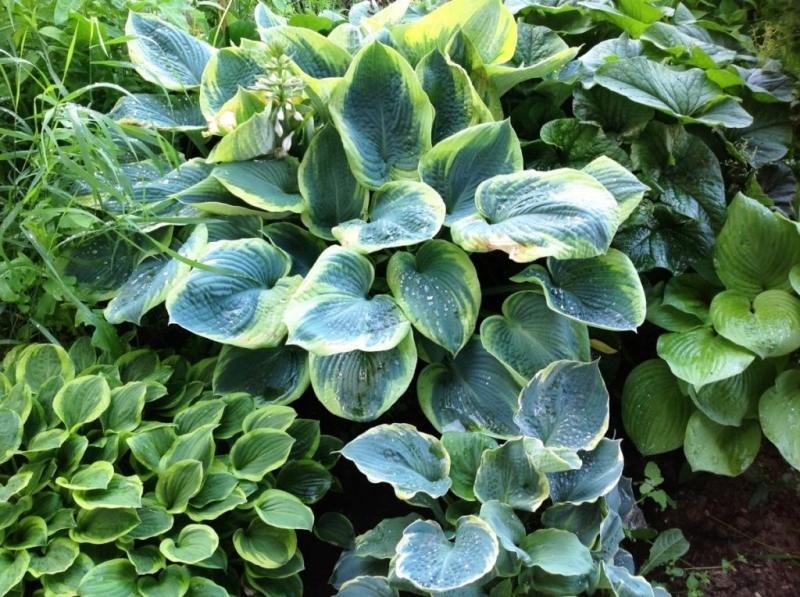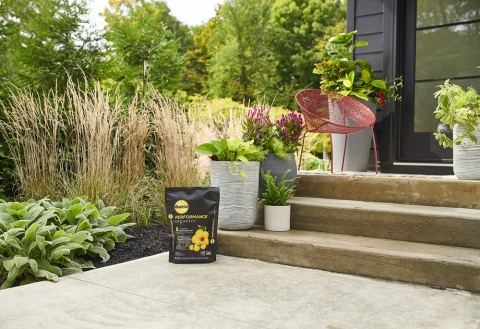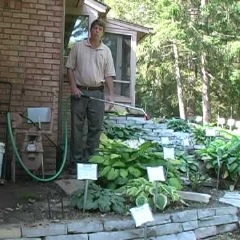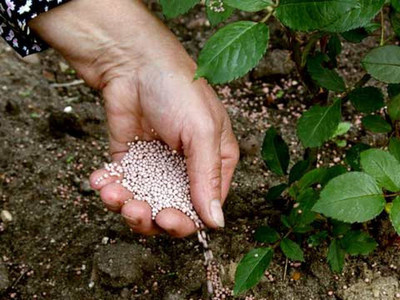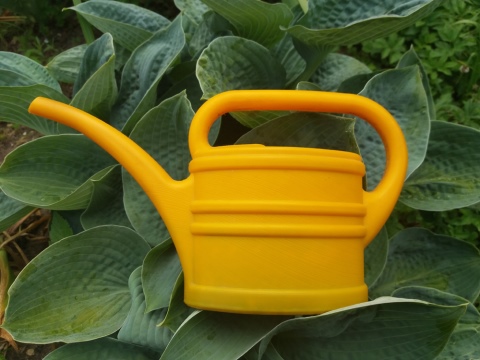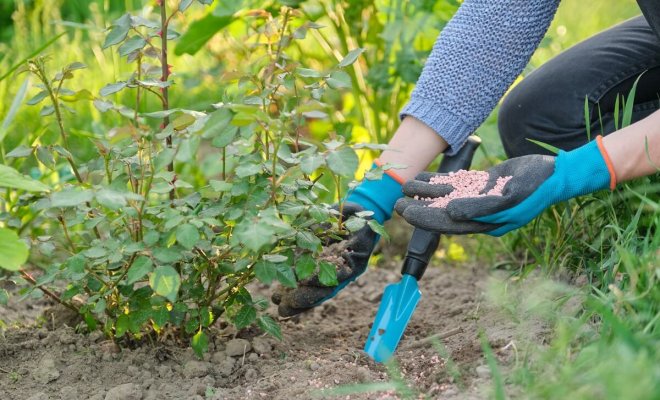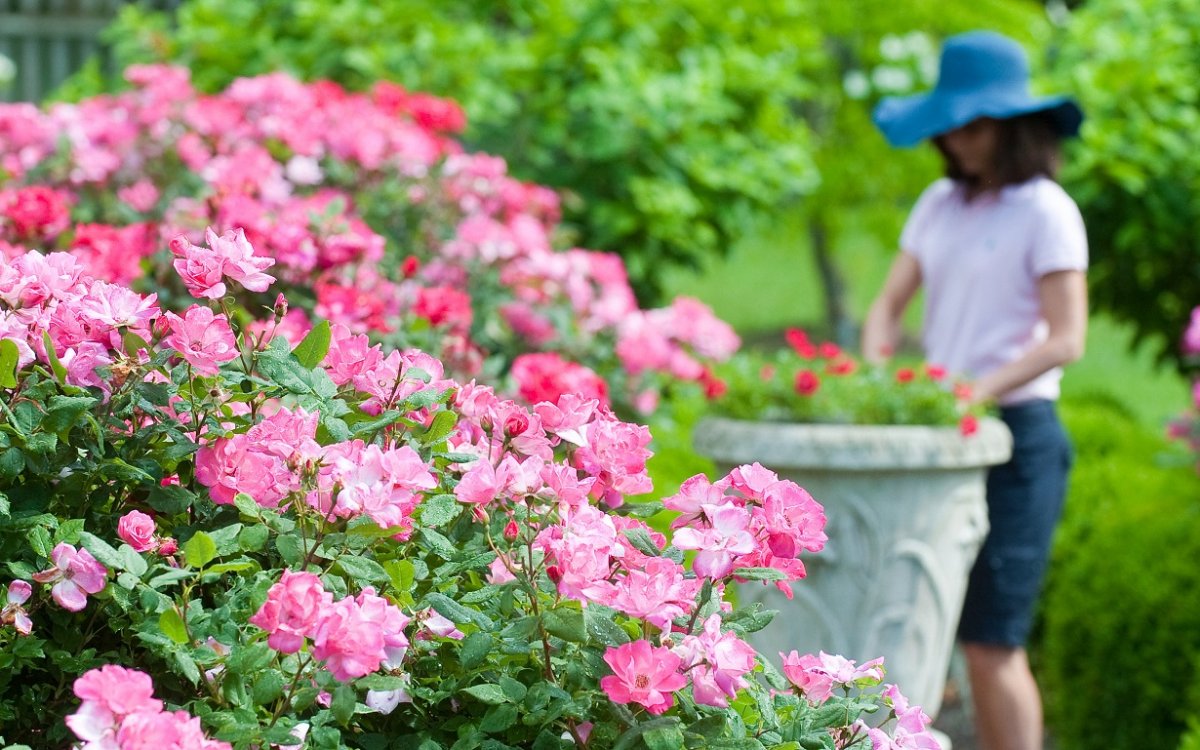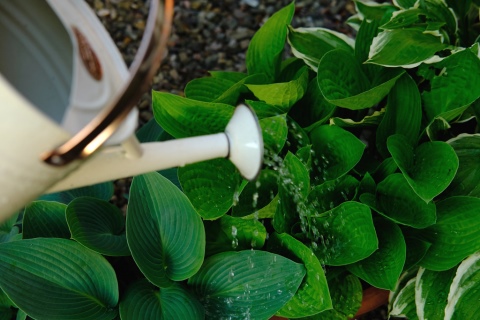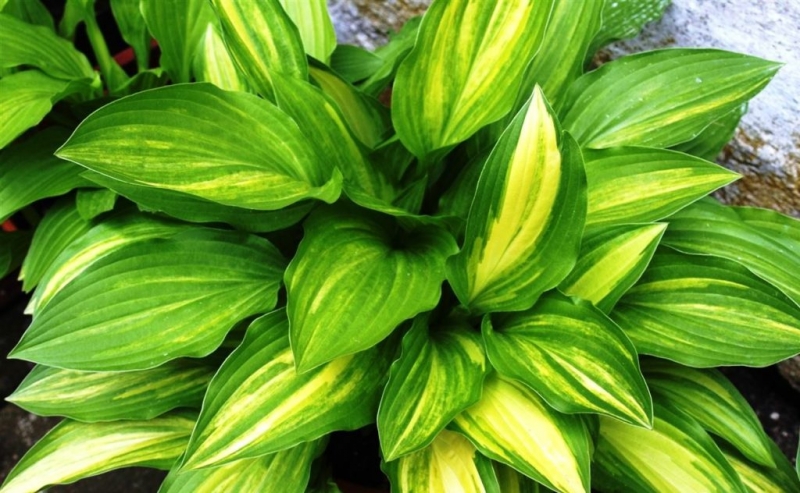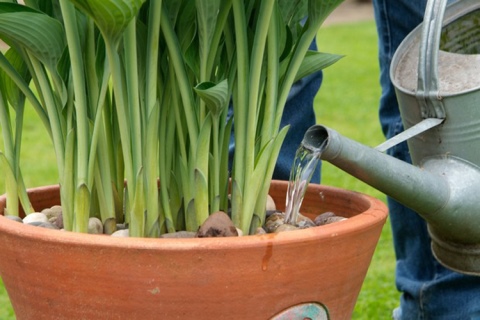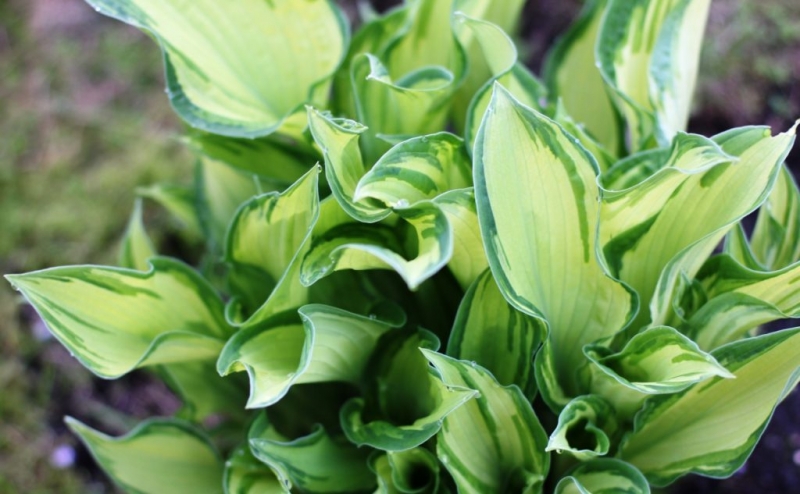Autumn fertilizers for the lawn
Many people think that for a beautiful lawn you just need to get good seeds and mow an organic green "mat" on a regular basis. But this is not at all the case. Lawn grass, like other plants, requires care, including timely feeding. Popular autumn lawn fertilizers are bone meal (2-3 cups per square meter), as well as superphosphate (50-70 g per square meter).
Fertilizers for the lawn: how to feed the lawn in spring, summer and autumn
A lawn is not just a free meadow with grass, but a complex mini-ecosystem that needs fertilization.
Of the ready-made complex fertilizers, granular fertilizer of prolonged action Fertika lawn autumn, as well as Bona Forte lawn, are popular. The optimal time for introducing these compositions into the soil is late August - early September.
In addition, to make the green lawn happy next year, you can spray ash over it in the fall, which is also a good absorbent for harmful substances that can damage the appearance of your lawn. This procedure can be repeated in the spring after the snow melts.
4 win-win ways to use wood ash in the country
Useful recipes for the use of ash at their summer cottage.
June top dressing of a flower garden
In summer, it is enough to feed annual flowers once during the formation of buds. Perennials need two feedings before and after flowering. In the first case, so that there are more flowers, and they are larger, in the second, so that the plant gains strength for the upcoming winter and laid strong buds for the next season.
In June, flowers are fed with organic and mineral fertilizers.
So that roses and other perennials will delight with a lush flowering, they should be fed with potassium-phosphorus fertilizers. To do this, 10 g of potassium sulfate and superphosphate are dissolved in 10 liters of water. You can also use a solution prepared from a mixture of mineral and organic fertilizers: 1 liter of mullein, 25 g of superphosphate, 15 g of ammonium nitrate and potassium sulfate per 10 liters of water. It is enough for feeding 4-5 adult bushes. Of the complex fertilizers during the budding period, Bud or Zircon are suitable.
How to care for roses in summer
Roses blooming all summer are the dream of any gardener. But how to achieve such a long flowering from this capricious culture?
After the end of flowering, peonies should also be fed with complex fertilizers, which will contribute to the establishment of renewal buds and abundant flowering next year. For this purpose, azofoska or nitrophoska is suitable at the rate of 50-70 g per 1 sq. M.
For feeding rhizome perennials in June-July, a less saturated solution of organic matter and mineral fertilizers is used than for roses. In 15 liters of water, 1 liter of mullein is diluted, 20 g of ammonium nitrate and superphosphate, 15 g of potassium salt and a glass of wood ash are added.
Annual flowers at the beginning of summer need nitrogen. They can get it both from organic matter (manure, droppings, compost, herbal infusions) and in mineral form (nitrogen, urea).
The easiest way to feed the flower garden is with the help of slurry. A kilogram of rotted manure is dissolved in 10 liters of clean water. The liquid top dressing will be ready in a day. Having diluted it by half with water, watered the flower garden. Then the soil is loosened or mulched.
Feeding from poultry manure is prepared in the same way as a solution of horse or cow manure, with the only difference that it is insisted for two weeks. Then prepare a solution at the rate of 1/2 l of infusion per bucket of water and water the roots of the plants with it.
Flowers are especially fond of feeding from wood ash, for the preparation of which a glass of ash is bred in a bucket of clean water.
In the heat, plants are fertilized with an organic solution early in the morning or after five in the evening.
Important nuances and useful recommendations
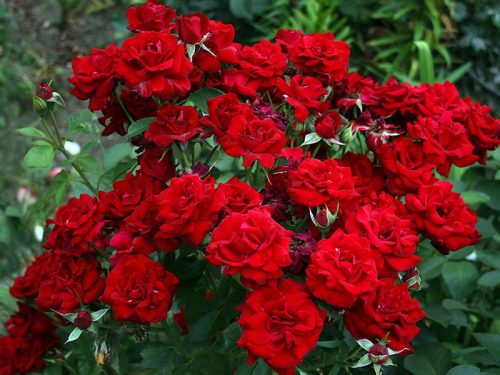
Roses need a lot of nutrients in summer.
Roses are recommended to be fed throughout the season (spring-autumn). Moreover, a greater number of procedures occur in the summer, when these plants have a period of budding and flowering. In this case, feeding is required in August and after flowering. In this case, it is recommended to fertilize rose bushes no more often than once every 2 weeks, so that nutrients have time to be absorbed.
Any fertilizer is suitable for roses, but in the summer it is not recommended to make top dressing with a high nitrogen content, since they promote active growth and negatively affect flowering. It should be borne in mind that this nutrient is found in considerable quantities in organic matter and therefore should be used only after the plants have faded. When applying dressings, it is necessary to strictly adhere to the recommended dosages, since excess nutrition is harmful. The procedures should be carried out in cloudy weather, applying fertilizers to a pre-moistened soil. After applying top dressing, the roses should be watered and the soil should be loosened.
Features of feeding different types of roses
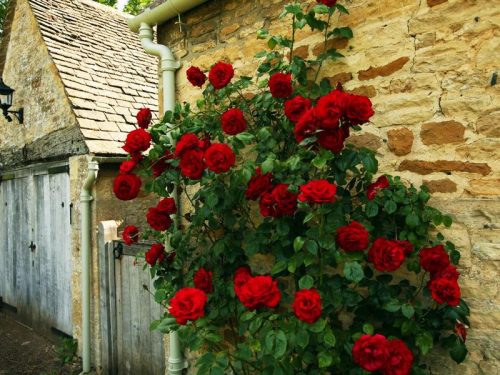
Semi-climbing roses require enhanced feeding in August
It is possible to fertilize plants in the summer according to the general scheme of feeding, but it is advisable to take into account some of the features of different varieties. Individual additional feeding is required for semi-pendant species. Their feature is a significant number of leaves and stems, and it is more difficult for them to survive the winter with such an abundance of vegetative mass. Therefore, at the end of summer, it is recommended to feed semi-vine species with complex fertilizer for roses.
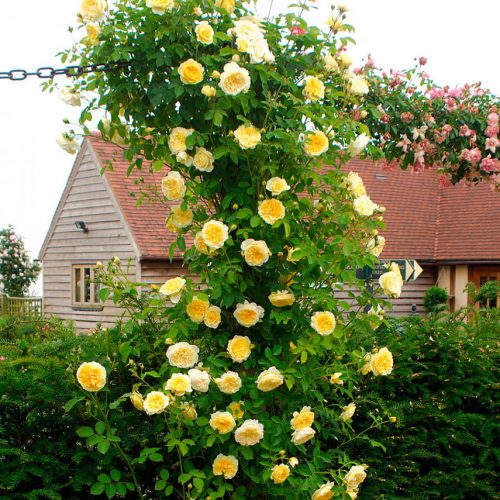
Climbing roses love organic feeding the most.
Climbing roses prefer organic. In summer, they can be fed with herbal infusion and ash. But such fertilizers should be applied in small quantities, since they contain a lot of nitrogen.
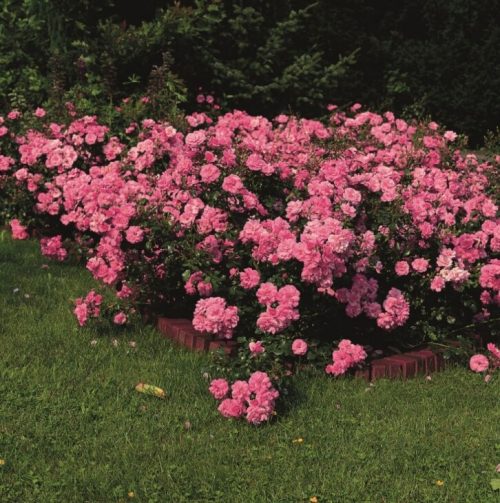
Ground cover roses are recommended to be fed with urea
Ground cover varieties, due to their proximity to the soil, are more likely to be infected with fungal diseases. For this reason, as a preventive measure, they should be sprayed with a carbamide solution in July (4 g of urea per 1 liter of water).
How to feed the host for growth
After transplanting, it is not required to fertilize the plant in the fall; in the spring in the post-transplant period and further during the active period, the host needs regular feeding. This also applies to non-transplanted individuals.
To ensure health, which means preserving the beautiful appearance of the plant, you need to know how to feed the host, when and how to do it correctly, and in what quantities to use fertilizers.
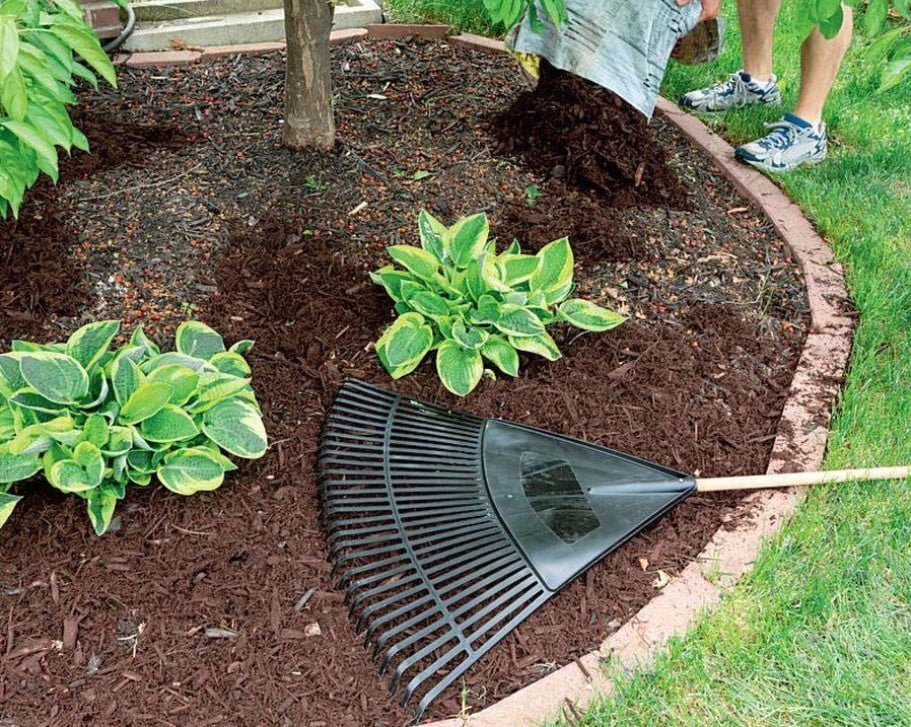
Mulching hosts with organic
With the beginning of the growing season, already at the end of April-May, when the plant is ready to wake up from winter dormancy and start growing, the host is supplied with complex fertilizers consisting of organic matter and mineral preparations.
Leaf compost, various organic residues (seed husks, rotten tree bark, etc.), which are laid out under the bushes, can be used as organic fertilizing. Mineral preparations should contain mainly nitrogen, which is necessary for plants to build up green mass.
Important! Mineral fertilization is carried out after watering or rain. They are dissolved in water and poured under the root, avoiding contact with the leaves.
When after the first spring feeding has passed about two weeks, it can be done again.
If the plant does not develop well, and a problem arises of how to feed the hosta for better growth, then the same mineral complexes are used, but they are introduced simultaneously in two ways:
- The soil is loosened under the bush, and the granules are scattered there. Or they are bred and watered;
- A solution of such fertilizers as Aquarine flower, Agrovitaqua, etc., is sprayed on the aboveground part of the hosts.
Important! For hosta varieties with blue and blue leaves, spraying cannot be used due to a possible violation of the protective coating
How to feed hosts in June
If organic matter needs to be fertilized once in the spring and then again before wintering, then mineral complexes can be fed throughout June and early July. The mode of their introduction is every 15 days, but no more than four times during the entire active period.
In August, but no later than the middle of it, the hosta is fed with phosphate-potassium fertilizers, which are necessary to create a supply of nutrients for the winter. It is enough to do this 1-2 times.
Important! Moderation is important when feeding hosts. This is especially true for the use of organic fertilizers and late dressings.
Otherwise, she will use up all her strength to continue growing and will not survive the winter.
Basic feeding rules
In different phases of flowering
Do I need to feed the orchid during flowering? Let's consider the basic rules of fertilization at different stages of flowering.
Peduncle formation, bud setting and the beginning of flowering
An orchid, before blooming, spends a lot of energy on laying buds. During this period, she needs phosphorus and potassium.
Phosphorus promotes abundant and long-lasting flowering. Potassium affects the process of photosynthesis. Use preparations for feeding 1 time in 7 days from the moment the peduncle appears and at the beginning of the opening of the buds.
There are preparations for orchids with a low concentration of macronutrients and a normal proportion of trace elements:
- "Agrecol for Orchids". Packing - 350ml. Contains N - 5%, P - 5%, K - 5% and trace elements. Flow chart - 7 ml per 3 liters of water;
- "Biopon for Orchids". Packaging - 500ml and 250ml. Contains N - 6%, P - 4%, K5%. Dilution rate - 1 cap for 1 liter of water;
- "Blank sheet for orchids". Packing - 310ml; in the composition of N - 1.5%, P and K - 4%, as well as all the necessary trace elements. Consumption rate - 1 cap for 2 liters of water;
- "Orchid flower paradise". Contains nitrogen - 18%, phosphorus - 7%, potassium - 36%, magnesium and trace elements. The dilution rate for irrigation is 10 ml per 1 liter of water;
- Bona Forte for Orchids. Consists of nitrogen - 4%, phosphorus - 2.5%, potassium - 7% and trace elements. Can I spray them with an orchid? Suitable for root spraying and leaf spraying. The consumption rate under the root is 5 ml per 1.5 liters of water, leaf processing is 5 ml per 3 liters of water.
When most of the flower stalks bloom
In a grown peduncle, it is impossible to change the number of flowers that will bloom. Therefore, the introduction of macro- and microelements at this stage will not affect the splendor of flowering in any way.
Advice! At this stage, it is advisable to cancel the application of fertilizers altogether or reduce their concentration three times from that recommended in the instructions.
Why it is necessary to cancel the application of dressings:
-
If you continue to actively fertilize the orchid, then the process of opening the buds will accelerate and the flowering will quickly end;
- During flowering, the activity of the roots decreases, they are not able to accept the incoming macronutrients. There is a risk of root system burns.
The exception is orchids, which bloom repeatedly without interruption for several months. They need to be fertilized once every seven days, reducing the concentration by half. Use fertilizers for flowering:
- "Agrecol for Orchids";
- "Biopon for Orchids";
- Or "Orchid Flower Paradise".
Withering buds
If the flower does not form a new peduncle or the old one does not have buds, then the plant can have a rest period.
It is recommended to apply a complex fertilizer with all macro- and microelements without large doses of potassium and phosphorus. Do this within two weeks after the last buds have wilted. Then cut back on watering and feeding. Start applying fertilizers no earlier than a month later.
Fertilizer options:
- "Master for Orchids" - liquid concentrate 300ml.Contains nitrogen: 5%, potassium: 5%, phosphorus: 6%, as well as trace elements, phytohormones and amino acids. Dilution dose - 5 ml for 1.5 liters of water;
- Kemira Lux is a chlorine-free water-soluble fertilizer. Contains N: 16, K: 20.6, P: 27 and trace elements boron, manganese, magnesium, zinc, sulfur. Method of application - 0.5 teaspoon for 5 liters of water.
In different seasons of the year
Winter and summer period
In winter and summer, you need to reduce the amount of watering to once a month.
What is the reason:
- In the cold period, all processes in the flower slow down and the roots will not have time to process a large amount of fertilizer during flowering;
- In summer, during the hottest months, high air temperatures also negatively affect the plant's ability to absorb macronutrients.
Spring and autumn period
At this time, more frequent feeding is recommended:
-
Optimal air temperature, an increase in daylight hours after winter, scattered sunlight, unable to burn the leaves - these factors will contribute to active and prolonged flowering;
- Under favorable conditions, re-flowering is possible without a dormant period.
Attention! Many orchids do not have a pronounced dormant period. But they definitely need rest after flowering, which reduces the frequency of feeding.
How to fertilize tomatoes for the first time?
In order to choose the right fertilizer for feeding tomatoes, you need to know their types and composition. All fertilizers are divided into 2 types:
- mineral - contain nutrients - chemical elements;
- organic - fertilizers of natural origin (manure, peat, sawdust).
Mineral fertilizers
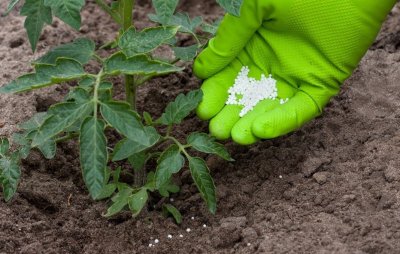 Mineral fertilizers help the plant to develop after rooting in the soil; they are used in case of a lack of chemical elements in the soil.
Mineral fertilizers help the plant to develop after rooting in the soil; they are used in case of a lack of chemical elements in the soil.
Many gardeners do not consider mineral fertilizers to be a full-fledged food for vegetables; they use them only as an “ambulance”, in case of emergency.
Others, on the other hand, often and gladly use them to feed vegetables.
The most popular mineral fertilizers:
- potash - promote the growth of the root system and strengthen the immunity of plants;
- nitrogen (these include urea, saltpeter). This type of fertilizer stimulates the growth of a young plant, therefore it is recommended to use it only after planting seedlings in the ground;
- phosphate (superphosphate) - affect metabolic processes, are a source of energy.
Potassium sulfate (potassium sulfate) is a natural fertilizer containing about 50% potassium. Application rate - 20 grams per 1 sq.m of planted tomato seedlings.
Attention! When working with potash fertilizers, protective hand gloves and goggles should be worn.
Urea (carbamide) is a mineral fertilizer with a high nitrogen content. It is produced in the form of white granules. To apply in the form of plant nutrition, 4-5 grams of urea is used per 1 square meter of planting. It is applied by scattering over the soil surface, as close as possible to the root of the plant.
Ammonium nitrate is produced in the form of white granules-balls, with a nitrogen content of about 30%. To prepare top dressing, 10 grams of nitrate is used, which it dissolves in 5 liters of water. It is applied using a watering can or a ladle, strictly under the root of the plant.
Superphosphate is a granular fertilizer containing 30% phosphorus. To feed a tomato, you need to apply about 50 grams of fertilizer per 1 sq. M.
Important! In order to determine the amount of fertilizer applied, it is enough to use a teaspoon, which contains about 5 grams of the substance.
The introduction of mineral fertilizers in order to feed the plants planted in the ground is best done in a complex manner. Most often, ready-made dry mixtures are used, which contain potassium, nitrogen, phosphorus and other nutrients. For application, it is necessary to use 30-40 grams of such fertilizer per 1 sq. M. landing.
Organics in spring
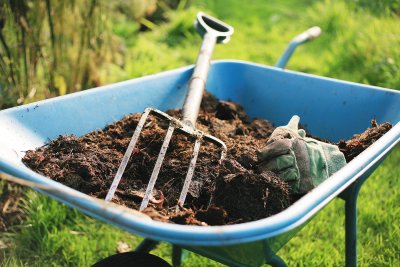 In addition to mineral fertilizers, tomatoes can be fed with such fertilizers as manure, ash, chicken droppings.
In addition to mineral fertilizers, tomatoes can be fed with such fertilizers as manure, ash, chicken droppings.
These fertilizers are of natural origin and are environmentally friendly.
Manure is the most common fertilizer. Before making it is necessary to prepare a solution. To do this, 1 bucket of manure is poured with 1 bucket of water and insisted for a week, after which 1 liter of this infusion is diluted in 1 bucket of water. The resulting infusion is applied in a ratio of 1 liter per 1 tomato bush.
Important! Do not use fresh manure as a top dressing. Only its infusion or humus rotted over the winter .. Ash is an excellent remedy that can compensate for the lack of nutrients
You can prepare a solution from it as follows:
Ash is an excellent remedy that can compensate for the lack of nutrients. You can prepare a solution from it as follows:
- a container of 50 liters or more filled with water is used;
- for every 10 liters of water, 0.5 liters of wood ash is poured;
- the mixture must be mixed well.
That's all, the ash feeding is ready. Under one root, it is necessary to make 0.5 liters of infusion.
Chicken manure is a fertilizer that contains all the necessary trace elements. For its use, it is necessary to prepare a solution in the ratio of 1 part of droppings to 10 parts of water. The resulting solution is mixed and applied at the rate of no more than 1 liter per 1 bush.
Terms of dressing and application rates in the spring-summer period
Scheduled feeding begins from the second year of growth of the rose bush. In order to understand how to process roses at different stages of growth, which feeding method is better to choose, you should carefully study the fertilization schedule.
March, April. After the snow melts and the shelter is removed from climbing roses, preparations with a high nitrogen content can be applied. Fertilizer is poured into previously prepared furrows around the bush.
May. Period of active vegetative growth and bud setting. They use drugs with a high content of phosphorus and potassium. When cooking on your own for 10 liters of water, you should take:
- 15 g of ammonium nitrate;
- 30 g superphosphate;
- 15 g of potassium salt.
A good foliar top dressing will be an ash solution. 150 g of dry matter is poured into 1 liter of water and insisted for 2-3 days. The resulting concentrate is diluted in 10 liters of water.
Picture 7 Onion peel infusion is considered an effective folk remedy for feeding roses.
The infusion of onion peels, prepared according to folk recipes, not only nourishes, but also protects against certain pests and prevents mold (bloom) and other diseases.
June. The beginning of flowering of rose bushes. For those who still do not know how to feed roses in June for lush flowering in the garden, a recipe is useful, consisting of:
- 25 g of ammonium nitrate;
- 50 g superphosphate;
- 50 g of potassium salt.
In addition to these components, foliar dressing with the "Bud" preparation will also be useful. A good effect can be achieved by watering with mullein infusion at the rate of 5 liters of solution for each large bush. Many growers this month practice mulching bushes with rotted manure, compost or humus.
July. It is a period of active flowering. Leaf top dressing of roses with a solution of urea at the rate of 30 g per 10 liters of water is very useful. For root nutrition, a composition is prepared from:
- 20 g of ammonium nitrate;
- 40 g superphosphate;
- 60 g of potassium sulfate or potassium nitrate.
A good effect can be achieved by adding 150-200 g of compost under the bush.
Important! Any nitrogen fertilization at the end of summer is carried out only in combination with potassium. August
This month, the application of nitrogen in any amount is stopped. If this is not done, then the young shoots will not have time to get stronger, and will die in the winter cold. The composition for feeding is as follows:
August. This month, the application of nitrogen in any amount is stopped. If this is not done, then the young shoots will not have time to get stronger, and will die in the winter cold.The composition for feeding is as follows:
- 40 g of potassium magnesium;
- 50 g superphosphate;
- 15 g of potassium salt.
Before feeding roses, you should carefully study all the rules for making preparations.
It is important to observe the dosage, choose the right time and composition of the fertilizer. Despite the whims of a blooming beauty, it is not so difficult to achieve lush flowering, you just need a little patience and knowledge of certain subtleties
And then, blooming roses will become a real decoration of any dacha, country house and even the windowsill of a city apartment.
Subtleties of care
Crop care consists of regular weeding of the topsoil around the bushes, removing weeds.
- With a thickened planting and overgrowing of planting holes with other plants, peonies stop blooming, develop poorly, and the buds become smaller.
- Watering plants is done at least once a week, during budding, flowering and in the hot season of the crop, it is necessary to water three buckets of water per plant.
- To obtain large buds for cutting, lateral inflorescences should be pinned. Ornamental bushes are not touched. Faded buds are removed, showered petals and dry foliage are removed.
- In the summer-autumn season, the plant should be carefully looked after. During this period, cultures can get sick with fungal and viral diseases: gray rot, verticillosis, and so on.
- Peonies must be cut, keeping the developed buds, 2 cm away from them.
- In winter, the plants are covered. Straw is not recommended.
Fertilizing young plants
In the first years of life, young peonies do not require root fertilization with mineral preparations. Peonies bloom profusely in the third year after planting. By this time, the culture is growing 10-15 shoots. At this time, from the period of active growth to the end of autumn, root fertilizing with mineral preparations is carried out. Often there are at least three fertilizers. It is worth feeding the plants according to the scheme of three dressings:
- The first fertilization occurs with nitrogen-containing mixtures and falls on the active vegetative period in early spring, after the snow melts.
- The second procedure is during the laying of flower buds. Used phosphorus-potassium preparations containing a small amount of nitrogen.
- The third - after flowering, exclusively with phosphorus preparations. The last feeding is the most important, it will ensure the wintering of the culture, the laying of flower ovaries for the next year. Feeding takes place two weeks after the last bud falls.
Fertilizing adult plants (8-10 years old)
As a fertilizer, granular (dry) and liquid substances, organic matter are used. Plants respond well to slurry. Mullein is diluted with water in a ratio of 1: 10 or bird droppings are used (1: 20). The diluted mixture should be infused for at least three days. Before watering, superphosphates are added to the liquid and diluted with water 1: 2. Peonies are watered with this fertilizer 1 time during the formation of flower ovaries. The mixture is poured into shallow grooves dug near the bush at a distance of 25 cm from the center of the plant. One bucket of diluted solution is consumed per bush. In the spring, after the snow melts, adult plants are fertilized with decomposed humus, superphosphate, and potassium chloride. The finished mixture is laid out around the peony bushes at a depth of 5 cm.
Why fertilize
The variety of soil always affects the health of the plant. And timely feeding will ensure the favorable growth of the hosts for more than 20 years. In good conditions, it becomes more beautiful every year, showing volume in flowering and greater brightness in the leaves. For a lush bush, it is enough to observe the timing of fertilization and a number of agrotechnical rules.
Watering is an integral part of top dressing.
It is important to maintain soil moisture, since the hosta root system is practically at the surface of the earth.
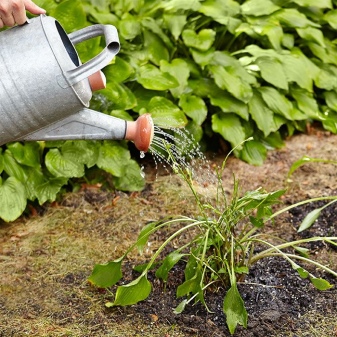
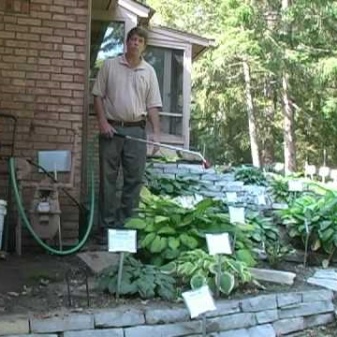
And also such a procedure as mulching is important.It is proposed to carry out it in two stages: in spring before flowering, in autumn after cleaning (pruning) procedures.
Some gardeners do not pay attention to the intricacies of agricultural techniques, but true connoisseurs of ornamental plants will not miss the "little things", because sometimes it is in them that the secret of growing beautiful flowers. Fertilization rules for hosts also have their own characteristics.
The ultimate goal of these works should be the presence of an optimal drainage layer, fertile soil, which contains humus, various microorganisms and mineral components. And as a result - rapid growth and formation of a beautiful leaf rosette.


